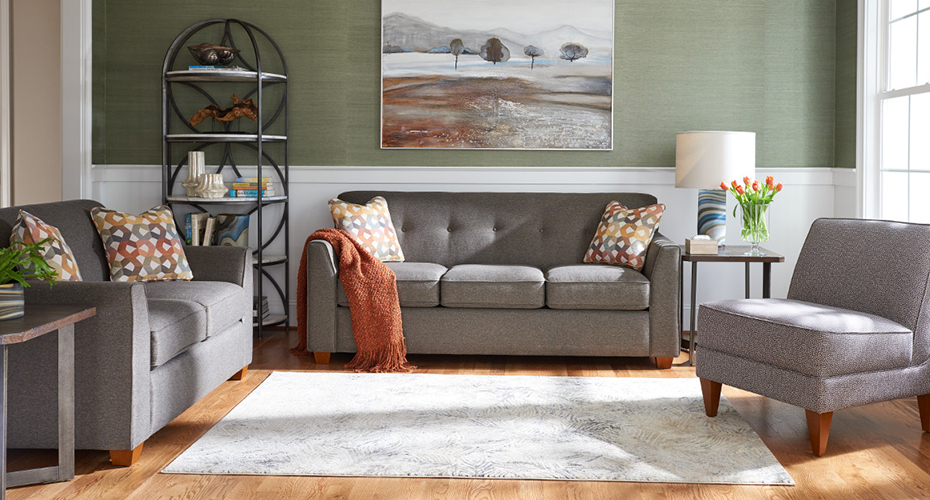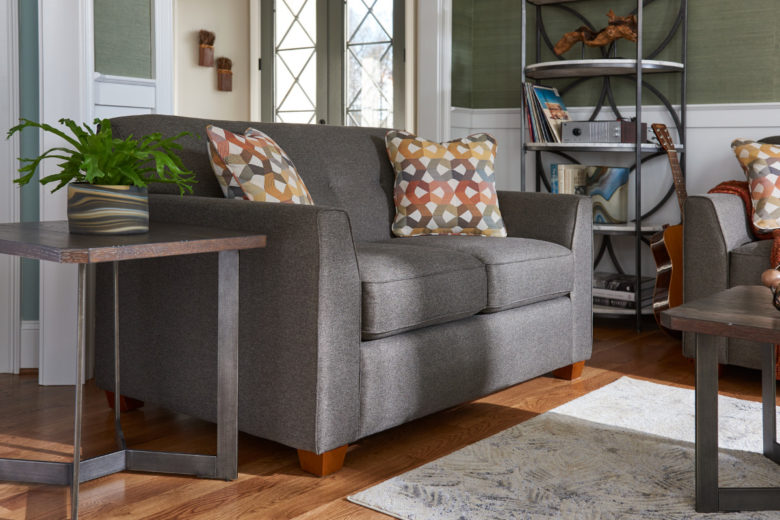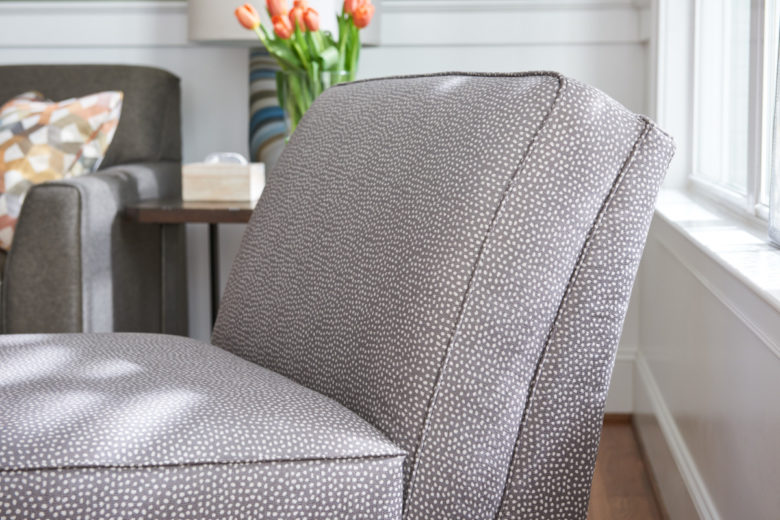5 Interior Design Tips That Actually Transform Your Living Room
La-Z-Boy Southeast | November 17, 2025

Your living room should feel like you—comfortable, welcoming, and put-together without looking like you tried too hard. But between Pinterest boards and Instagram inspiration, it’s easy to feel overwhelmed by all the “rules” of interior design.
The good news? You don’t need a design degree to create a space you love. You just need a few foundational principles that professional designers use every day. Here are five tips that will make your living room look intentionally designed rather than accidentally assembled.
1. Start with Neutral Fabrics on Your Largest Pieces
Think of your sofa and primary seating as the foundation of your room—because they are. When you invest in a quality sofa or sectional, you want it to last through multiple style phases, not just one.
That’s why covering your largest furniture pieces in neutral fabrics is one of the smartest design decisions you can make. Neutral doesn’t mean boring—it means versatile. Grays, beiges, taupes, and soft whites create a flexible backdrop that works with virtually any color scheme you can dream up.
The real magic happens when you realize you can completely refresh your room just by swapping out accent pillows, throws, or artwork. Feel like going bold with emerald green accents this year? Your neutral sofa won’t fight you. Ready for a coastal vibe next summer? Same foundation, new accessories. It’s like having a design chameleon that adapts to your evolving taste.

2. Master Scale and Proportion (Especially with Area Rugs)
Ever walk into a room that just feels… off? Chances are, the scale and proportion are working against each other. This is especially common with area rugs—one of the most misunderstood elements in living room design.
Here’s the mistake most people make: buying a rug that’s too small for the space. Your area rug should anchor your seating arrangement, not float awkwardly in the middle like a design afterthought. As a general rule, all of your main furniture pieces should either sit fully on the rug or have their front legs on it.
Look at your floor plan as a complete picture. A properly sized rug defines your conversation area, makes the room feel more cohesive, and can actually make a small space feel larger by creating visual continuity. When in doubt, go bigger than you think you need.

3) Let Your Accessories Tell Your Story
This is where your personality gets to shine. While your sofa and paint colors create the foundation, your accessories bring the soul.
Think beyond the generic “things that look nice.” The best accessories spark conversation and make you smile every time you see them. That vintage camera collection from your travels. The pottery you picked up at a local art fair. Family photos in mismatched frames that somehow work perfectly together.
These personal touches transform a well-designed room into your room. They’re the difference between a space that looks like a catalog and one that feels lived-in and loved. Don’t be afraid to display things that matter to you, even if they don’t fit a specific aesthetic. Authenticity always wins.

4) Choose Fabric First, Then Match Your Paint
Here’s a professional secret that will save you countless headaches: select your upholstery and drapery fabrics before you choose your paint color.
Why? Because you’ll find hundreds of fabric options, but paint comes in thousands of shades. It’s far easier to find the perfect paint to complement your fabric than the other way around. Plus, paint is relatively inexpensive and easy to change if needed. Reupholstering a sofa because the color doesn’t work with your walls? Not so much.
Bring your fabric swatches to the paint store and test samples on your walls in different lighting conditions. You’ll be amazed how much a paint color can shift from morning to evening light.

5) Layer Your Lighting for Flexibility
If you only have one overhead light in your living room, you’re missing one of the most powerful design tools available: layered lighting.
Different types of lighting serve different purposes and create different moods. Ambient lighting (like ceiling fixtures) provides overall illumination. Task lighting (like reading lamps) helps you actually use the space. Accent lighting (like picture lights or uplighting) adds drama and visual interest.
The real benefit comes from flexibility. Hosting a dinner party? Dim the overhead and let table lamps create an intimate glow. Movie night? Turn off everything but subtle accent lights. Working from your couch? Position a task light exactly where you need it.
You’ll also notice that your fabrics and colors look different under various lighting conditions. That’s not a problem—it’s an opportunity to experience your room in multiple ways throughout the day.

Bringing It All Together
Great interior design isn’t about following every trend or creating a magazine-perfect space. It’s about making thoughtful decisions that create a room you actually want to spend time in—one that adapts to your life rather than forcing you to adapt to it.
At La-Z-Boy Southeast, our complimentary design service connects you with degreed interior designers who can help you apply these principles to your specific space. Whether you’re starting from scratch or refreshing what you already have, professional guidance can help you avoid expensive mistakes and create a living room that truly works for your lifestyle.
Ready to transform your space? Visit any of our locations across North Carolina, South Carolina, and Georgia to start designing the living room you’ve been dreaming about.
Here are some additional resources you may like to check out:
- 8 Best Furniture Stores with Free Design Services
- La-Z-Boy Free Design Service: Reviews & Testimonials
- 5 Reasons You Should Work with a La-Z-Boy Interior Designer



